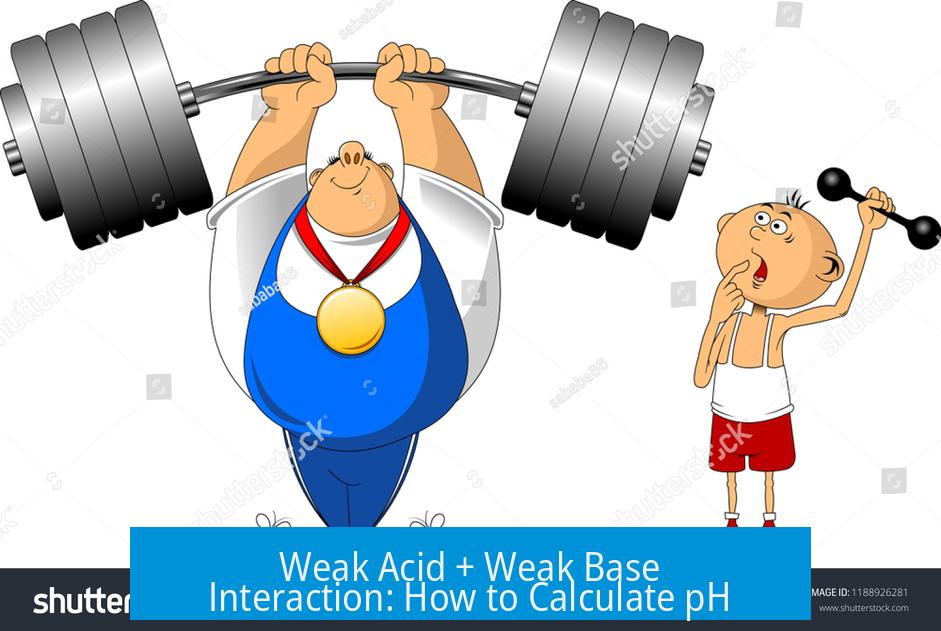Weak Acid + Weak Base Interaction: How to Calculate pH?

Calculating the pH of a solution involving a weak acid and a weak base requires determining the equilibrium concentrations of hydronium (H3O+) and hydroxide (OH-) ions, then computing the excess to find the resulting pH.
Step 1: Identify the Key Reaction
Begin with the main acid-base reaction. This involves the strongest acid and strongest base in the mixture. For instance, with citric acid (HCit) and bicarbonate (HCO3-), the key reaction is:
HCit + HCO3- → Cit- + H2CO3
This simplifies the system by considering relevant species and treating multi-protic acids like citric acid as monoprotic for convenience.
Step 2: Calculate the Equilibrium Constant (K)

Calculate the equilibrium constant for this reaction using the acid dissociation constants (Ka) of the involved acids:
| Reaction | Equilibrium Constant |
|---|---|
| HCit + HCO3- → Cit- + H2CO3 | K = Ka(HCit) / Ka1(H2CO3) |
This ratio balances the acid strengths, guiding the equilibrium position.
Step 3: Use an ICE Table to Find Equilibrium Concentrations
Set initial concentrations (I) of acid and base. Represent changes (C) during reaction and calculate equilibrium (E) concentrations using:
- Initial: known concentrations
- Change: decrease in reactants, increase in products proportional to x
- Equilibrium: initial ± change values
Example:
Species | I (M) | C (M) | E (M) HCit | 0.10 | -x | 0.10 – x HCO3- | 0.15 | -x | 0.15 – x Cit- | 0 | +x | x H2CO3 | 0 | +x | x
Substitute equilibrium values into the expression for K and solve for x. This gives equilibrium concentrations.
Step 4: Calculate [H+] and pH
After determining equilibrium species, use the acid dissociation constant expression:
Ka = \(\frac{[H_3O^+][A^-]}{[HA]}\)
Plugging equilibrium concentrations for the conjugate acid-base pair (e.g., HCit/Cit-) allows calculation of hydronium ion concentration, [H3O+].
Alternatively, apply the same principle to the base’s conjugate acid. Both methods converge to the same result.
Compare the calculated [H3O+] and [OH-] values:
- If [H3O+] > [OH-], pH = −log[H3O+]
- If [OH-] > [H3O+], calculate pOH = −log[OH-] and then pH = 14 − pOH
Summary of Procedure
- Identify the strongest acid-base pair and write the equilibrium reaction.
- Calculate equilibrium constant K from known Ka values.
- Use an ICE table to find equilibrium concentrations of all species.
- Calculate [H+] using Ka expressions for conjugate pairs.
- Compare [H3O+] and [OH-] and calculate pH accordingly.
Key Takeaways
- Use the dominant acid-base reaction to set up equilibrium.
- K is derived from the ratio of acid dissociation constants.
- ICE tables organize concentration changes efficiently.
- Calculate [H+] via Ka of conjugate pairs for pH.
- The excess ion determines the final pH after subtracting lesser concentration.
For practical example and detailed tutorial, refer to the instructional video resource.





Leave a Comment